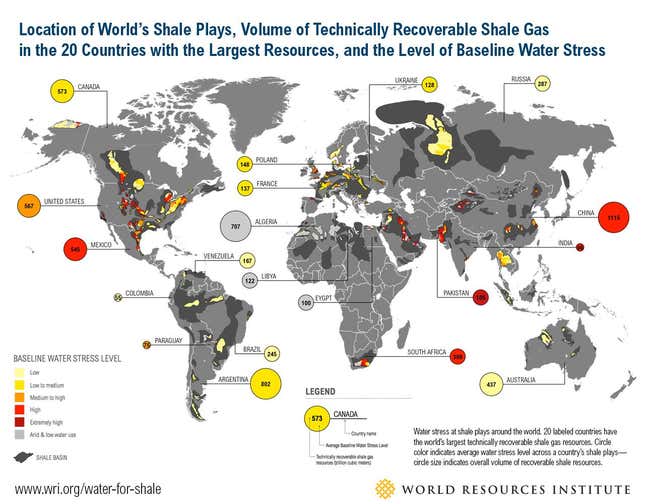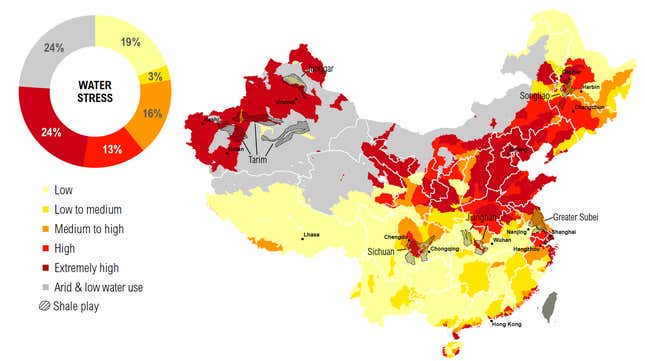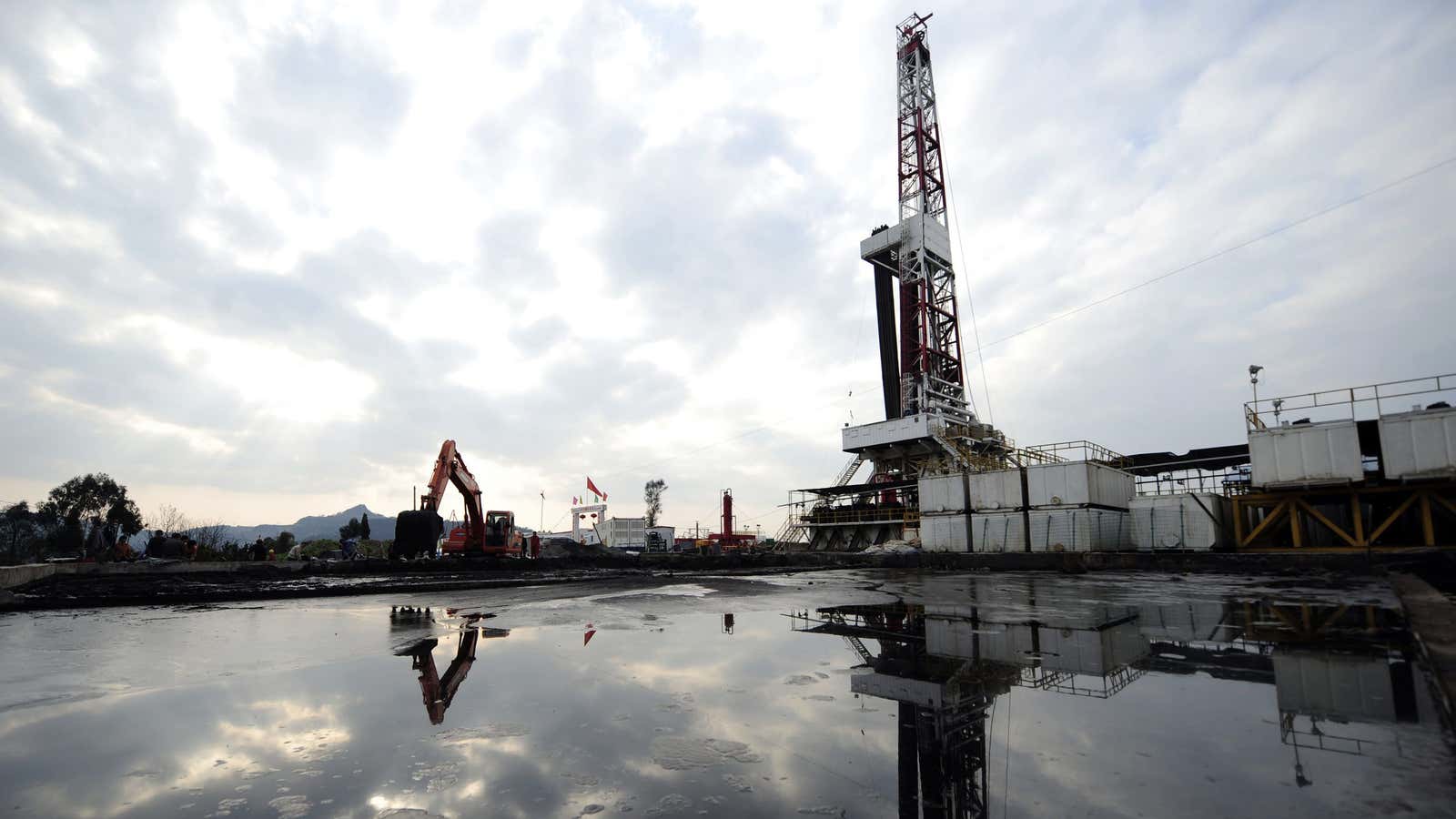The Middle Kingdom is thought to have the world’s largest technically recoverable shale gas resources, as well as the third-biggest supply of recoverable shale oil—more than 30 trillion cubic meters (1,115 trillion cubic feet) of shale gas—nearly twice what the US claims.
This is exciting news for a country that consumes more energy than any other nation on the planet—and whose natural gas consumption is expected to surge fivefold by 2035, according to the International Energy Agency. China’s reliance on coal-fired power plants, which account for around 70% of its energy consumption, create air pollution so severe that growing public outrage about it could threaten political stability.

There’s a catch, though. More than three-fifths of China’s shale resources are in areas where water is very hard to come by, as a new study by World Resources Institute details.

That’s potentially a big problem given that the way you release gas is spraying millions of liters of water, sand, and chemicals against a shale wall until it cracks open, releasing gas. In the US, drilling a single well takes between 0.2 million and 2.5 million liters of water, while the hydraulic fracturing part requires between 7 million and 23 million liters.

Not all of that water is lost for good. Between three-quarters and a tenth of water used in for drilling and hydraulic fracturing flows back up to the surface. However, even if much of it comes back up, it’s still spiked with noxious chemicals. Companies recycle it for more fracturing, hold it in disposal tanks, or treat it and discharge it into surface waters. An additional risk to water supplies, therefore, comes from the fact that if that water isn’t carefully managed, it can contaminate local groundwater.
China’s not the only one to have this problem. By a nasty twist of fortune, many of the largest deposits of shale oil and gas happen to lie in areas with the scarcest supply of water, according to WRI.
But China is among the unluckiest. As WRI explains, water is much more abundant in southern China; however, most of the water-heavy fossil reserves and industrial activity is in the north. The majority of its shale reserves are in the Sichuan basin, around Chongqing, and the Tarim basin in the deserts of central and western Xinjiang. The water supply in both areas is already strained, which will pose big challenges for companies hoping to extract shale resources there. In addition to general scarcity, with the exception of the Tarim and Jungar basins, China’s shale resources are all in areas with dense populations. That means companies will have to compete with water demand for irrigation, as well as industrial and personal use.
